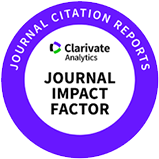Micelle silymarin as a functional feed additive: Enhancing broiler performance and nutrient bioavailability in laying hens
Abstract
Micelle silymarin (MS), a bioactive compound with antioxidant and anti-inflammatory properties, functions as a functional feed additive, promoting broiler performance and optimizing nutrient bioavailability in laying hens. This study aimed to assess the impact of MS on different aspects of broilers, including growth, digestibility, excreta score, footpad lesion score, tibia ash, meat quality, and blood absorption rate of laying hens. In the first experiment, 576 one-day-old Ross 308 broilers (of mixed sex) were randomly allocated. These birds had an average body weight of 43 ± 0.23 g and were monitored over a 32-day trial period. The broilers were grouped into eight separate cages, each containing 18 birds, assigned to four different treatments: basal diet as the control and basal diet supplemented with 0.02, 0.04, and 0.06% MS. In the second experiment, sixteen Hy-line brown laying hens, aged 61 weeks, were separated into two distinct treatment groups: TRT1, basal diet + 4% powdered silymarin; TRT2, basal diet + 4% MS, with eight repetitions per treatment. Administering graded doses of MS to broilers led to a consistent increase in body weight gain across days 1–9, 9–21, 21–32, and the overall period (<italic>p</italic> = 0.021, 0.011, 0.019, and 0.002, respectively). Additionally, feed intake showed a linear increase (<italic>p</italic> = 0.017) during days 1–9, and dry matter digestibility improved linearly (<italic>p </italic>= 0.011) with higher levels of MS inclusion. As MS concentrations in the broiler diet increased, tibia ash content and breast muscle yellowness linearly increased (<italic>p</italic> = 0.038 and <italic>p</italic> = 0.045, respectively), while pH decreased (<italic>p</italic> = 0.004). However, the excreta score and the footpad lesion score exhibited no significant changes (<italic>p</italic> > 0.05). Furthermore, laying hens that were fed micelle-type silymarin demonstrated a significantly higher silymarin absorption rate in the blood two hours and four hours (<italic>p </italic>< 0.001 for both) after feeding than powdered-type silymarin. Overall, supplementation with MS at 0.06% was identified as the optimal level, enhancing broiler growth performance, nutrient utilization, and meat and bone quality, facilitating the welfare of broiler production, while MS also demonstrated superior bioavailability in laying hens.
















